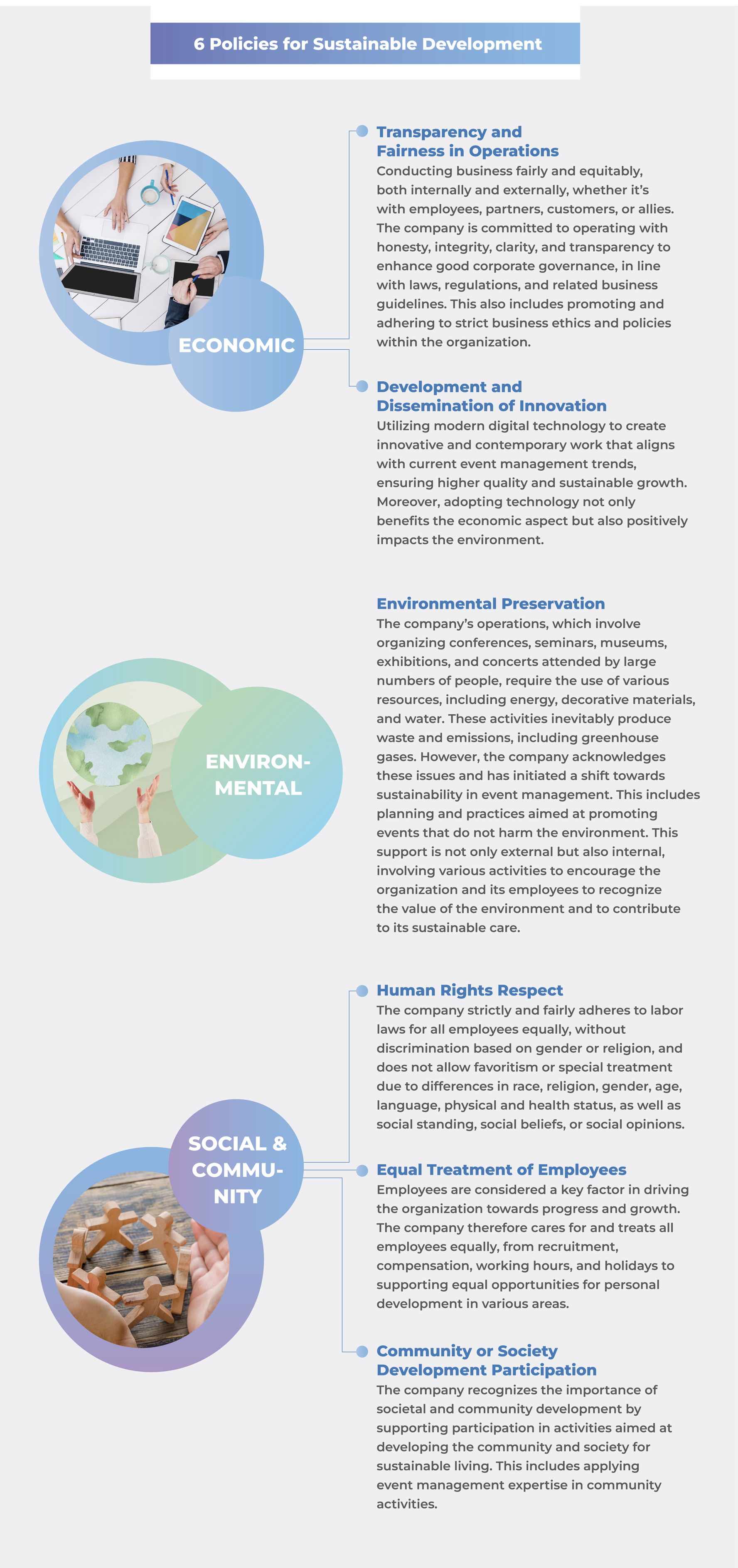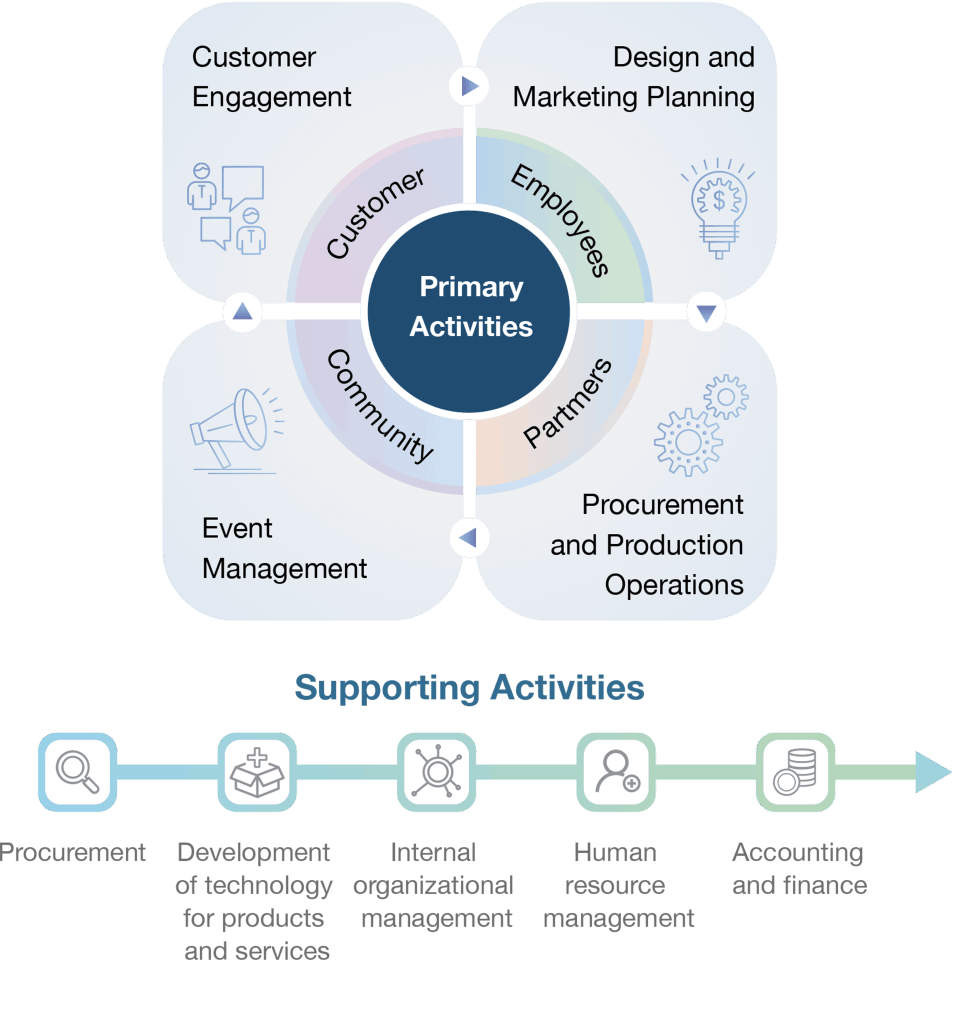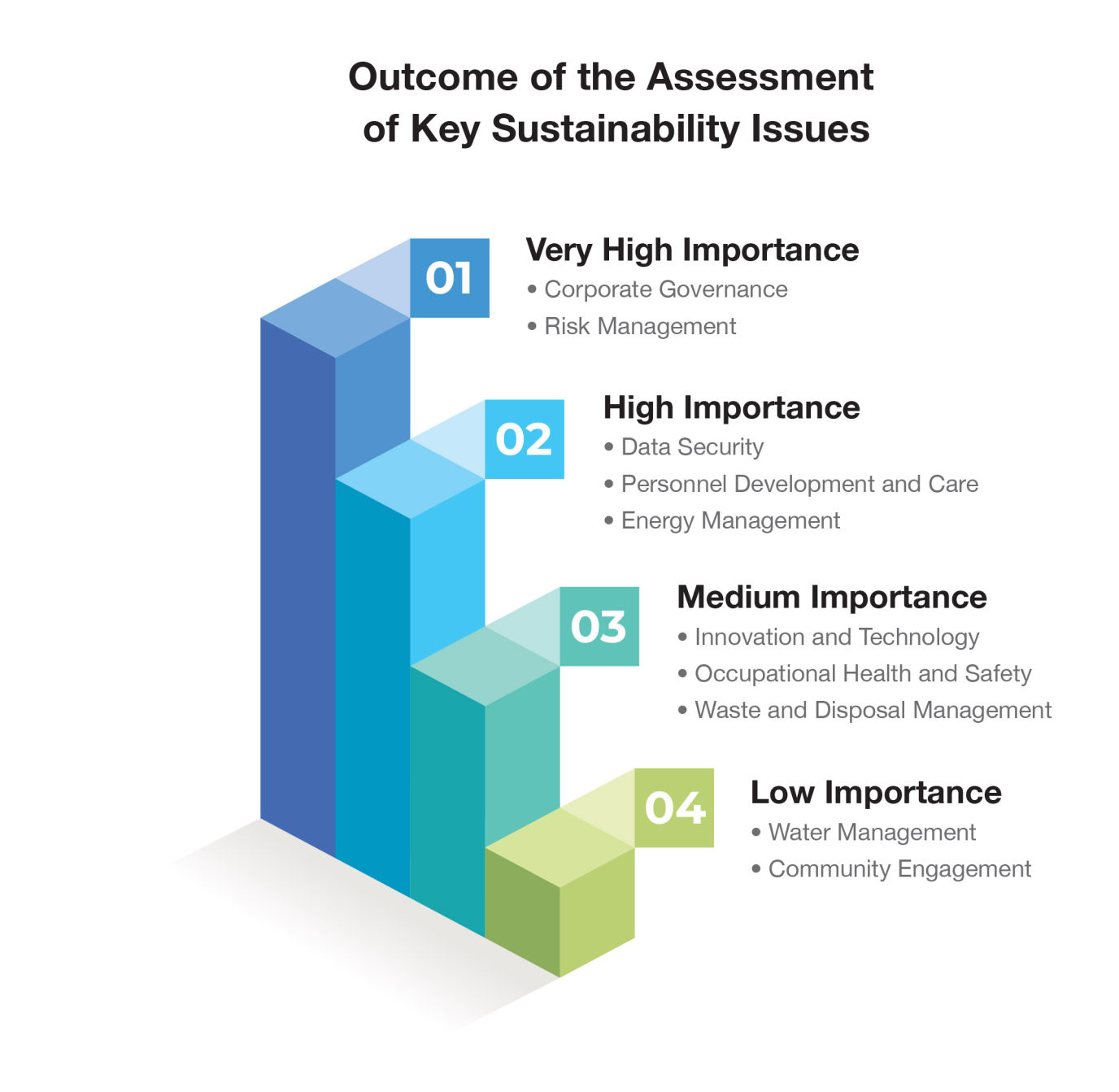1. Sustainability Policy
CMO Group Public Company Limited is aware of both internal and external factors that have significantly changed, including climate change, the high volatility of the global economy, and changes in community and societal behaviors and lifestyles from the past. This awareness has led the company to recognize the impacts, risks, and opportunities in conducting business for sustainable growth.
The company has thus established policies and strategies to drive the organization towards sustainable business operations, under the principle of good corporate governance. These policies and strategies cover all three dimensions: economic, social, and environmental, to meet the expectations of all stakeholders.

2. The Value Chain of CMO
The company places significant importance on the supply chain and the value chain, as every business activity has an impact on stakeholders at all levels. Therefore, there has been a careful examination of work processes and stakeholders directly and indirectly affected in each activity, aiming to identify issues that cover all dimensions comprehensively.

Primary Activities
1. Customer Engagement
Stakeholders: Customers, Employees
The company focuses on expanding its customer base across various industries while continuously maintaining its existing customer base. Customer engagement is a crucial tool for communication between customers and the company, allowing the company’s team to understand the goals and objectives of customer events, including discussions on design and decoration to meet customer needs. The company has developed more diverse communication channels on online platforms such as Facebook, TikTok, Instagram, and Line to facilitate customers and align with the changing communication behaviors in the current era.
2. Design and Marketing Planning
Stakeholders: Customers, Employees, Partners, Government Agencies, Communities
Developing the potential and skills of employees is essential for more efficient operations. Thus, the company supports continuous skill enhancement for all employees, not limiting learning to any single aspect. This approach is one factor that promotes creativity in design and marketing planning. Additionally, the company has experts to provide advice, guidance, and follow-up on work to ensure that every design piece is of high quality, safe, environmentally friendly, and meets customer needs.
3. Procurement and Production Operations
Stakeholders: Customers, Employees, Partners
The company emphasizes transparent, efficient, and fair procurement and contracting with all partners. It adheres to and implements the company’s procurement and partner code of ethics policies, where all procurement processes must be approved by authorized personnel. Given the impact of climate change on the world, the company promotes procurement from partners who are environmentally and socially responsible. In production operations, the company pays attention to every step to prioritize safety first, as events are public with many participants. Therefore, materials or equipment must be safe, leading the company to choose partners with recognized standards and certifications.
4. Event Management
Stakeholders: Customers, Employees, Media, Communities, Government Agencies
The company aims to deliver unique experiences and lasting impressions to customers and event participants. It pays attention from upstream to downstream processes, such as design, procurement, production, and event presentation, including considering sustainable event organization methods to minimize environmental and community impacts. The true value is shown through creativity, transforming it into events for everyone.
3. Stakeholder Engagement
The company analyzes and identifies stakeholders, incorporating their interests and concerns into the work plan and sustainability issues, including communication channels. It establishes formal and informal channels for receiving feedback and suggestions, promoting engagement with stakeholders to appropriately respond to their needs and expectations.


4. Assessment of Key Sustainability Issues
The company has conducted surveys and assessments of key issues related to business operations, from upstream to downstream, including economic, environmental, and social aspects, as well as stakeholders who may have both positive and negative impacts on creating value and worth for the business. The assessment process is as follows:

1. Identification of Key Issues
The company analyzes and identifies stakeholders, incorporating their interests and concerns into the work plan and sustainability issues, including communication channels. It establishes formal and informal channels for receiving feedback and suggestions, promoting engagement with stakeholders to appropriately respond to their needs and expectations.
2. Prioritization
After gathering the issues, the company will prioritize each based on two factors: the stakeholder groups related to the company and the impact on the three dimensions of business operations: economic, environmental, and social.
3. Verification of Accuracy
The company’s board is responsible for reviewing and verifying the key issues that have been compiled and prioritized, considering the company’s goals and strategies, as well as the stakeholder groups.
4. Review of Importance
To ensure the key issues align with the current situation and international standards, the company recognizes the need to review its sustainability report annually.
5. Materiality Assessment Results

6. Goals and Key Issues of Sustainability








